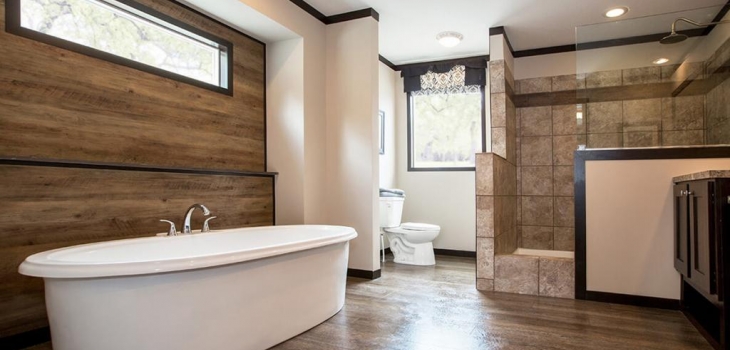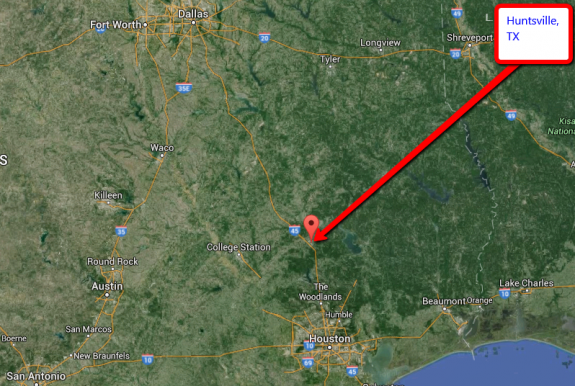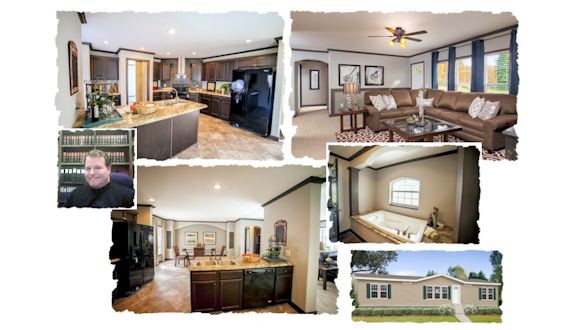“The one issue that will prohibit affordable housing in the future — not only manufactured homes, but site-built — is local zoning and covenants.”
— Jay Hamilton, executive director of the Georgia Manufactured Housing Association
When you’re a single mother of three looking to secure your family’s future, you have to have a plan.
One young Georgia woman thought she had a good one when she selected a five-acre parcel in Bartow County and borrowed the money from her grandfather to buy it.
For five years, she faithfully repaid her grandpa’s loan and finally, the land was hers. Now she was ready to purchase a new manufactured home she’d selected at the dealership.
But a lot can happen in five years, she discovered, and plans — no matter how well laid — have a way of getting hijacked by people with bigger plans.
Somewhere along the line, the Bartow County Commission, like many local governments in the 22-county Atlanta metro area, had quietly passed a new ordinance requiring a minimum 7/12 roof pitch — effectively eliminating the placement of manufactured homes, which typically leave the factory with a 4/12 pitch.

The need for the steeper roof concern in the Atlanta metro, but affordable homes that fail to generate large tax revenues apparently are.pitch ostensibly was to provide for snow loads. Of course, snow is not a compelling
“At the end of the day, they’re looking for what will generate the most amount of tax revenue per acre,” says Jay Hamilton, executive director of the Georgia Manufactured Housing Association.
“And people wonder why we’ve got an affordable housing crisis in America.”
Not in My Back Yard: The NIMBY Factor
While filling property tax coffers may be the force behind zoning initiatives that drive up the cost of housing in many communities, there is also the NIMBY factor — an artifact of the old days, before sleek modern manufactured homes, built to standards set by the U.S. Department of Housing and Urban Development, replaced shoddy RV-style trailers perched on concrete blocks.
Perceptions have not kept pace with the changes that have taken place since June 1976, when the last “mobile home” rolled off the assembly line, says Hamilton.

“The best thing that ever happened to our industry was we were able to get HUD to step in and require a building code,” he says.
Modern manufactured homes must be stronger by design, since they have to be transported to a location for permanent installation, and their lifespan is as long, or longer, than conventional homes constructed on site.
Many are indistinguishable from site-built homes and blend seamlessly into neighborhoods and subdivisions around the country. Yet the negative image of pre-HUD code homes has been hard to shake.
“The counties took advantage of that image to start eliminating manufactured housing,” says Hamilton.
Gary Adamek, owner of three Houston-area dealerships, watched this drama play out this summer in the city of

Huntsville, Texas — proudly billed as the home of former governor Sam Houston.
The city council convened on July 21st to formally pass a new ordinance banning manufactured homes within the Huntsville city limits. The measure had already been approved on first reading at a previous council meeting.
By the time the local residents and business community got wind of it, the measure was almost a done deal.
“There’s five MH dealerships in that town and not one of them knew about it,” says Adamek.

Alerted by the Texas Manufactured Housing Association, which had stumbled across an obscure newspaper article about the impending final vote, Adamek showed up for a pre-meeting workshop to see what the city council’s reasoning might be.
“They were talking about (manufactured homes) like they blow away, they catch fire, there’s no financing — and every point they made was absolutely incorrect,” he says.
It was clear to Adamek that none of the people trying to keep manufactured homes out of Huntsville knew anything about modern HUD-code homes.
“What was evident to me in talking to a city councilman after the meeting — his concept of a manufactured home was what his grandmother would have lived in, in 1975: a 12×48 trailer with metal siding.”
Les Stone, general manager of a Clayton Homes dealership in Huntsville briefly addressed the city council.
“I’d like to see you all slow down a little bit and get some accurate information.”
Adamek was happy to supply it.
Armed with facts, figures and studies, he explained that manufactured homes were as well or better built, more fire resistant, more wind resistant — and far more affordable — than their site-built counterparts.

Scott Cannon, national sales manager of a Clayton Homes manufacturing facility in Waco, journeyed to Huntsville to set the record straight on the quality of modern manufactured homes — “We have a government inspector in every manufacturing plant across the nation” — and to address the broad implications of the proposed ban for the Huntsville economy.
The industry, he told them, supported many families in the area, from set-up crews who install the homes, to plumbers, electricians and other skilled workers.
The employees of a Huntsville cabinet shop that supplies much of the cabinetry for the homes being built in the Waco factory depend on manufactured housing for 75 percent of their business, he told council members.
Cannon talked about construction standards and materials, but mostly, he wanted the city council to know that what they were about to ban was far more than a roof or a structure.
“It’s a place where people have birthdays, Christmas, they raise their kids. It’s not a manufactured house — it’s a home.
Citizen Soldiers on the Front Lines
One by one, the residents of those homes stepped up to the podium and expressed their outrage and bewilderment that their life plans were about to evaporate.
All had just discovered the existence of the ordinance that was about to be passed.
All owned their own land — for most, their only real asset — passed down for generations.
All had manufactured homes on that land, or were about to purchase a new one.
Margaret Taylor inherited hers from her mother in 2007. Everyone can’t afford to build a brick home, she told the council, and her manufactured home was just as nice.
Joyce Parker retired and moved back to her hometown of Huntsville in 1990. She bought extra lots around her so her kids and grandkids could settle there, too, in their own manufactured homes.
“I just want to know what we’re supposed to do when we can’t utilize our property.”
Diane Mack just bought a manufactured home she was about to move onto family acreage.
“I want my own property where I can raise my grandkids like I was raised.”
Blake Irving, an engineering aide for the City of Conroe owns eight acres in nearby Huntsville and has been shopping for a manufactured home to put on it. He doesn’t want to build a traditional home and makes no apologies for choosing to buy a home built in a factory.
“I could pay $180,000 for a manufactured home and get 3000 square feet. You’re not going to get that with a regular house for less than half a million dollars.”
When the nine members of the city council quietly and unanimously voted in favor of the status quo, it was the citizen involvement that made all the difference, says DJ Pendleton, executive director of the Texas Manufactured Housing Association.
Real People, Real Consequences
The proposed ordinance threatened to dramatically alter the lives of some 40,000 people living in Huntsville, where the state university and the state penitentiary supply most of the jobs.
The employment is stable, the benefits are good, but the paychecks don’t go very far.
Median income in Huntsville — located in one of the 10 poorest counties in the state — is $27,000 per year — half of the median income for the state of Texas, as a whole.

Two-thirds of the population rent their homes, with 62 percent of those spending more than 35 percent of their income on the rising cost of monthly rent.

“This city had serious demand for affordable housing and to limit that was crazy,” says Pendleton.
What’s more, the short-sighted measure was costing the town its future wealth and human resources, according to many who testified that a manufactured home was central to their life plans.
Like many born to modest means in America’s small towns, a large number of Huntsville’s native sons and daughters had to leave the area to find work and start families. Now they want to come home.
“Our sales here in this town — 35 percent are cash,” says Adamek. “Most are retirees returning back to Huntsville to retire near family. It’s a long-term plan they’ve put in place.”
Dr. Richard Watkins, a 20-year prison administrator, decorated Vietnam-era aviator and prominent community leader whose family roots run generations deep in Huntsville, told the city council that the issue was “very personal” to him, because a manufactured home had been important in realizing his own goals when he returned to his hometown in 1977.
“If you do this, you’re going to hurt a lot of good people who want to come and live and make a contribution in the community.”
Middle Class Squeeze
What nearly happened in Huntsville this summer has been happening in municipalities all over America, where local government officials have quietly passed ordinances restricting — or outright banning — the placement of manufactured housing within their jurisdictions.
As in the Atlanta area, roof pitch, minimum square footage and other MH-centric architectural features are cited for exclusion.
But some will simply pass ordinances that flatly prohibit manufactured homes, says Adamek. “They don’t even have to get fancy about it.”
Regardless of how the ordinances are structured, the outcome is the same: It is effectively squeezing the working and middle class out of home ownership.
“These cities and smaller towns — when they pass these rules, and won’t allow a manufactured home in, there’s a segment of the population forced to rent for the long-term, many for the rest of their lives,” says Adamek.
Nonetheless, local officials have managed to enact regulations that have served to eliminate manufactured housing in the 22 counties that comprise the greater Atlanta metro area.
Local ordinances require minimum square footage that zones out single section homes, and roof pitches that are steeper than what is typically found in a manufactured dwelling.
“It’s perfectly legal if it applies to all homes, so even site-built homes are subject to minimum standards,” Hamilton says. “That’s why our subdivisions no longer allow 1200-square-foot homes. It completely eliminates affordable housing.”
Chain Reaction
When you eliminate affordable housing, you eliminate places for minimum wage workers to live, he adds.
That’s what happened in toney Hilton Head, S.C.
“No one who works there can afford to live there. They send buses to downtown Savannah to pick up maids and workers.”
That appears to be what the future holds for metro Atlanta — transporting workers in from rural areas, says Hamilton.

The lack of affordable housing has already driven minimum wage workers farther and farther into outlying areas, resulting in an average one-way commute of 90 minutes to reach jobs in the city.
“It should be a municipality’s responsibility to supply housing choices compatible with the income of that zip code. They’re doing the opposite of that,” Adamek says.
The local governments’ actions have not only affected residents’ lifestyles, but the impact on the MH industry has cut into employment and livelihoods.
Fifteen years ago, Georgia had 31 manufactured housing plants, each one employing an average of 250 workers.
“Indirectly, when you take all of the installers, painters, plumbers, electricians — people that work for a living — we employed somewhere between 50,000 and 65,000 Georgians,” says Hamilton.
In 2015, although the state has grown, and state and county budgets have doubled, there are only five MH factories in Georgia, each employing 150 to 200 people.
The question then becomes, how much of the loss was sustained because of the recession, and how much could be attributed to excluding manufactured homes through zoning and other ordinances?
While a great deal of attention has been focused on the impact of recession-era federal policies that have negatively impacted affordable housing, some MH professionals see the relentless tide of local ordinances enacted in back rooms and council chambers across the country as the real threat.
“I believe it is the largest silent hand that is negatively affecting our industry in the U.S.,” Adamek says. “The municipalities have hurt us way, way more than Dodd-Frank.”
Beyond Huntsville
While the battle lines have been drawn in local towns, cities and counties around the country, Jess Maxcy has been able to effectively deal with the issue of restrictive zoning at the state level.

Maxcy, president of the California Manufactured Housing Institute, has been in the business for 53 years and was instrumental in getting the California legislature in 1984 to enact rules that prohibited discriminatory zoning policies.
The new legislation had three components:
- A local jurisdiction could not prohibit manufactured housing on any residential lot, with the sole exception of districts on the National Register of Historic Places.
- A manufactured home could not be subjected to a fee structure different from a site-built house.
- Community Covenants and Restrictions (CC&Rs) could not prohibit the placement of a home solely because it was built off-site.
The key to measure: The homes had to be architecturally compatible with the neighborhood.
That meant no aluminum-sided houses. (“We don’t build those anymore, anyway,” says Maxcy.) And the jurisdictions were allowed to require a certain roof pitch and eaves no greater than 16 inches.
“That meant the houses going in, when properly manufactured at the factory, were indistinguishable from a site-built house,” Maxcy says.
But what has worked in California for the past three decades might not be possible to accomplish in many other places, like Georgia, where state laws allow local governments to set their own agendas.
Texas, with 20 percent of the national share of manufactured home sales and nearly two dozen factories, is by far the largest MH market.
Noting the continuing erosion of zoning on the local level, Pendleton and the state association have embarked on a project to compile a database of existing ordinances in Texas cities, and identify which might have enacted restrictions that conflict with state law.
The primary focus, however, will be an initiative to discover which towns might be entertaining zoning proposals to restrict manufactured homes.
“If we don’t have notice before it’s passed, your only hope is to sue and overcome the burden of proving it was arbitrary and unreasonable,” Pendleton says.
There are plenty of local governments that are no doubt out of compliance with discriminatory zoning, but it takes a lot of money to challenge it, so nobody does,” says Hamilton, whose state association gave up trying to litigate the municipal roadblocks in Georgia several years ago.
“Even if you win, they just generate new laws to eliminate manufactured homes,” he says.
Certainly the young mother of three lacked the resources to take on Bartow County so she could place a home she could afford on land that she owned free and clear.
But after five years of planning and paying off the land, she was not willing to abandon her dream of home ownership, and she did something Bartow County never saw coming.
She financed a used manufactured home with a standard 4/12 roof pitch, and paid a contractor $7000 to construct another roof on top of it with the required 7/12 pitch.
The new, higher-pitched roof served no practical purpose — the original 4/12 roof worked just fine. But the 7/12 pitch met the letter of the newly minted local law, allowing her to place a manufactured home on her land.
The roof was only one of many factors that threatened to put her little family’s plans out of financial reach.
In the course of five years, the $75 in local permit fees had grown to several hundred dollars. Then there was the cement walkway the county required her to install from the road to her front door.
Meantime, her budget was squeezed by federal regulations that drove up the cost of borrowing money to buy the home.
By the time she had paid for a new, non-functional roof, fulfilled the county’s most recent wish list and absorbed the higher interest and loan fees, the home she could afford was smaller and older than she had originally envisioned.
But it’s all hers. ##

 manufacturedhomelivingnews.com Manufactured Home Living News
manufacturedhomelivingnews.com Manufactured Home Living News































